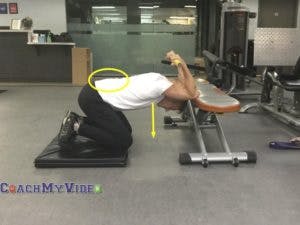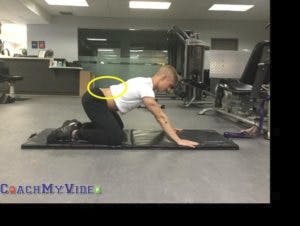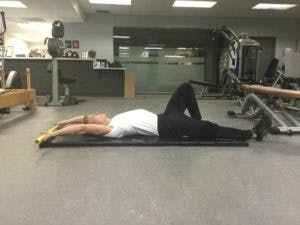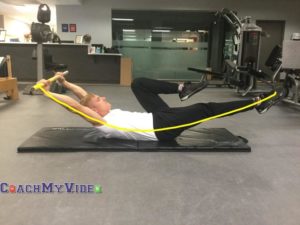When participating in CrossFit, as with any fitness regimen, there is inherent risk of injury. Currently, the evidence suggests injury risk with CrossFit is comparable to regular gym training and triathlon training, while still having lower risk than contact sports 1.With the high intensity and complex movements characteristic of CrossFit comes equally high prerequisite mobility and stability demands. To mitigate injury risk and facilitate longevity with a training regimen such as CrossFit, it is imperative to take steps to ensure these prerequisites are achieved. The following are strategies to optimize common CrossFit movements and keep you training safely.
1. Latissimus Dorsi Flexibility
The latissumis dorsi is a large shoulder and back muscle that, if tight, limits the arms ability to reach overhead and can contribute to excess strain at the shoulder. The shoulder is the most commonly injured area in CrossFit, and most often during gymnastic movements 2. Full overhead shoulder mobility is utilized in gymnastics as indicated by the findings that gymnasts typically have an average of ~10 degrees greater shoulder flexion range of motion than the general population 3. A large percentage of CrossFit movements include maximal overhead positioning of the upper extremities, whether it is with a barbell, pull-up bar, or gymnastic rings. Having the flexibility to reach these end-range positions is necessary to avoid undue strain at the shoulder. The stretch below is a great option for opening up the shoulder before any overhead movements.

1. *Notes: allow low back to be rounded while upper back arches and chest drops toward the ground; ~1min static stretch, ~1min dynamic movement in and out of stretch
2. Hip Flexion Mobility
The lumbar spine is the second most commonly injured area in CrossFit, most often during barbell lifts 2. With the deep squatting often performed in CrossFit, particularly with Olympic lifts, sufficient hip flexion mobility is required to reduce excessive strain on the low back. If squatting with external load is performed beyond the depth available at the hip, the lumbar spine is forced into a compromised flexed position, which can result in greater than 100% more pressure on the intervertebral discs and other spinal structures 4. Below are exercises to optimize hip mobility in preparation for safe squatting.

2. *notes: do not allow low back to round when pulling knee to chest; ~2min per hip

2. *notes: place feet and hips in same position as you would while squatting; maintain slight arch in back as you rock back; ~2min rocking back and forth
3. Hollow Position Stability
One of the more controversial movements in CrossFit is the “kip”. It is also one of the most common, being utilized for pull-ups, muscle-ups, and even handstand push-ups. If performed incorrectly, the kip can cause excessive lumbar spine extension, resulting in significant compressive forces at the low back as well as problems throughout the body’s kinetic chain. Abdominal exercises that promote global “bracing” of the mid-line have been shown to increase intra-abdominal pressure and improve spinal stability 5. Below is an example of a kipping-specific abdominal exercise known as “hollow holds”. Developing strength in the hollow position is essential to control the kipping motion and distribute force throughout the whole body, thus avoiding excess stress at individual joints.


3. *notes: flatten low back into the ground as you raise up; hold for 3-5 seconds; control descent back to starting position; repeat to fatigue
References:
- Weisenthal, B. M., Beck, C. A., Maloney, M. D., DeHaven, K. E., & Giordano, B. D. (2014). Injury rate and patterns among CrossFit athletes. Orthopaedic Journal of Sports Medicine, 2(4), 2325967114531177.
- Hak, P. T., Hodzovic, E., & Hickey, B. (2013). The nature and prevalence of injury during CrossFit training. Journal of strength and conditioning research.
- Gannon, L. M., & Bird, H. A. (1999). The quantification of joint laxity in dancers and gymnasts. Journal of Sports Sciences, 17(9), 743-750.
- Nachemson, A. L. (1981). Disc pressure measurements. Spine, 6(1), 93-97.
- Stokes, I. A., Gardner-Morse, M. G., & Henry, S. M. (2011). Abdominal muscle activation increases lumbar spinal stability: analysis of contributions of different muscle groups. Clinical Biomechanics, 26(8), 797-803.
